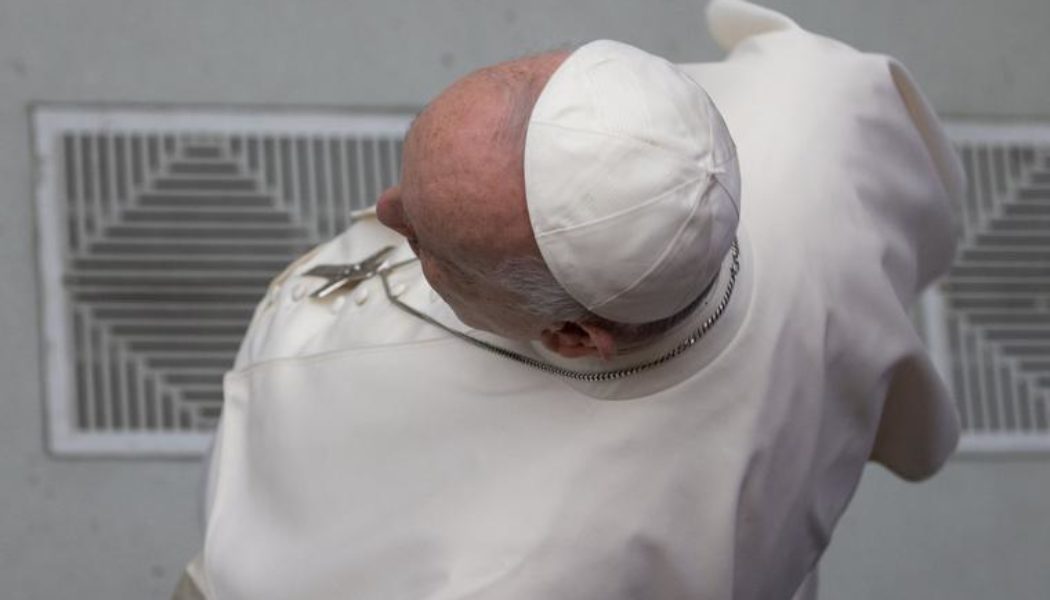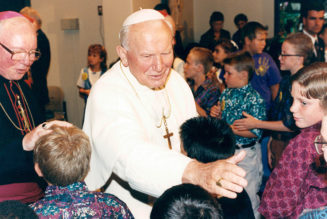
On the ninth anniversary of the formal inauguration of his pontificate, the feast of St. Joseph, Pope Francis published Praedicate Evangelium (Preach the Gospel), his new constitution for the structure of the Roman Curia.
Almost a decade in the making, much of it has already been implemented along the way. The final document does make some significant changes and provides the vision of a Curia that is evangelical, service-oriented, promotes synodality, is shorn of careerism and highly professional.
In short, there is much to admire. In such a sprawling document it may be useful to look at 10 initial highlights.
What Didn’t Happen
The Secretariat of State remains in its powerful position, meaning that the papal diplomats who staff it retain principal control over the Vatican agenda and operations. Praedicate Evangelium (PE) did not clip its wings, as had often been rumored. True enough, in December 2020 much of its financial authority was stripped away in the aftermath of the London property fiasco, but in response to that papal edict, the Secretariat of State did what bureaucracies are good at doing — or not doing. They simply did not comply.
It may be that Pope Francis thought better of reining in a department that has obstinately refused cooperate with his financial reforms. Why pick a losing fight?
The refusal of the Secretariat of State to promptly comply with papal mandates does raise questions about the whole of PE. It goes into effect at Pentecost, June 5. Will all Vatican departments comply? There is ample precedent under Pope Francis for the opposite.
Another long-rumored subject that Praedicate Evangelium did not touch is the authority of the “Dicastery for the Doctrine of the Faith” (DDF). The was an earlier realignment of the dicastery’s structures, and the PE language for the DDF makes it more consultative, but there is no talk of sharing doctrinal authority with other bodies or bishops’ conference. The German “synodal path” killed that dead.
Missionary Conversion
Praedicate Evangelium returns to the initial vision Pope Francis had for a “missionary conversion” for the entire Church. Indeed, the opening citation of PE is from St. John Paul II’s Redemptoris Missio (Mission of the Redeemer), namely that the “proclamation of the gospel” is the “primary service which the Church offers.”
The Roman Curia is not only a bureaucracy, but it is a bureaucracy and a necessary one. Bureaucracy and mission do not generally go together, but Praedicate Evangelium makes clear that Pope Francis is certainly going to try.
For generations local Roman parlance for the Dicastery for the Doctrine of the Faith was “la Suprema.” No longer. “La Suprema” is now the Dicastery for Evangelization, which combines the Congregation for the Evangelization of Peoples with the Council for the Promotion of the New Evangelization. The pope himself will be the prefect of evangelization, just as until 1968 the pope was the head of la Suprema, the Holy Office, now DDF. The day-to-day operations will be run by two “pro-prefects.”
That is a traditional touch somewhat at odds with the latest organizational chart dynamics, but it demonstrates that Pope Francis is determined to put evangelization at the heart of the Roman Curia. He has given himself the job of chief missionary of a missionary Church.
Service of Charity
One of the most compelling and innovative initiatives of Pope Francis has been the revitalization of the Pope’s personal charity. The “papal almoner” had previously been an honorary position conferred on a long-serving but generally anonymous prelate — a kind of retirement gift.
Pope Francis chose Konrad Krajewski for the role, created him a cardinal, increased his profile and budget, and made his work a flagship initiative of the pontificate. Cardinal Krajewski was sent by the Holy Father to Ukraine, and will represent Pope Francis in Fatima this Friday for the consecration of Ukraine and Russia to the Immaculate Heart of Mary.
Praedicate Evangelium creates a new “Dicastery for the Service of Charity.” The almoner will serve as prefect. It takes on new prominence, being listed third after Evangelization and DDF on the list of dicasteries.
Just as the missionary impulse is a continuation of John Paul’s teaching on mission, the elevation of charity is a direct echo of Benedict XVI’s teaching in his first encyclical that the Church’s “deepest nature” has a triplex expression: the proclamation of the gospel (kerygma), the worship of God (leitourgia) and the service of charity (diakonia). This last is now reflected suitably in the Roman Curia.
Another interesting note: During a vacancy in the Apostolic See — by death or resignation of the pope — all prefects lose their office. The sole exception until now was the Apostolic Penitentiary, the cardinal in charge of the “internal forum,” matters of confession. The mercy of God was never to be interrupted. Praedicate Evangelium adds the papal almoner to that — the service of charity is never to be interrupted.
Dicasteries, Dicasteries
Catholics, to the extent that they talk about the Curia, will have to learn a new lingo. For generations, there were two types of departments. “Congregations” exercised jurisdiction on behalf of the pope. “Councils” promoted various pastoral initiatives.
That’s why in 1988 St. John Paul II rejected suggestions to create a Congregation for the Laity. He held that the laity did not need the permission of the Holy See to exercise their mission, unlike a seminary or bishops’ conference or religious institute. A “council” for the laity would promote their vocation without compromising their freedom.
All that is now gone. Everything is to be called a “dicastery,” which is an off-note in PE. An outward-looking Curia would not employ ecclesiastical jargon that no one outside of Roman circles has ever heard of, let alone uses. Of interest, the Microsoft Word spellchecker offers “disaster” when “dicastery” is written.
It is unlikely that anyone actually asked for widespread use of the term “dicastery,” save for Roman stationery merchants and sign-makers, who will have plenty of commerce between now and June.
Not Italian? Nothing to Read Here
Speaking of Roman insider-ism, which Praedicate Evangelium takes pains to decry, PE was released without the customary advance notice and only in Italian. For a document in the works for nine years, and largely complete several years ago, Pope Francis was badly let down by his communications team. A centerpiece initiative should not have been given such a shabby rollout, without even the basic courtesy of summaries provided in the major languages. Memory fails to record another papal document of such importance being given such an improvised and inadequate presentation.
Bureaucratic Bloat?
Praedicate Evangelium merges together various departments into a single dicastery, as in the case of evangelization. The new Dicastery of Culture and Education combines the Congregation for Catholic Education and the Council for Culture. Whether this will streamline matters remains to be seen.
Mergers are handled in two ways by bureaucracies. Either there is a thoroughgoing rationalization of offices and the achievement of efficiencies, or there is bloat. In the latter, all the existing positions are kept and a new layer of coordinators is added at the top.
Bloat is likely, because while PE merges departments into a single dicastery, it maintains both of the original entities as separate “sections” in the new dicastery. Praedicate Evangelium intends for less bureaucratic bloat, but bureaucracies are the aboriginal home of unintended consequences.
Lay Prefects
Most headlines about PE spoke about the possibility “for the involvement of laywomen and laymen, even in roles of government and responsibility” and that “any member of the faithful can preside over” an office of the Curia.
There is already a layman as head of the Dicastery for Communications, and a priest (not a bishop) as prefect for the economic secretariat, but Praedicate Evangelium goes much further, allowing for the possibility for the DDF or Dicastery for Bishops to be headed by a lay person, however unlikely that might be.
Here the role of the Vatican diplomatic corps will prove key, as curial prefects are where senior diplomats often end up at the end of their careers, with the accompanying red hat. Those prize offices will not be given up easily.
Recall, as precedent, that in his early months, Pope Francis decreed that the honorific “monsignor” would only be given to priests over the age of 65. It was a modest attempt to discourage ambition and worldliness in the priesthood. How was it implemented by the Secretariat of State? Parish priests under 65 were cut out immediately, but for diplomats and curial officials, the 39-year-old who had been driving a desk for five years was still eligible. If the Secretariat of State fought that hard for monsignors, how much harder will it fight for its prefects?
Protection of Minors
Praedicate Evangelium established the Pontifical Commission for the Protection of Minors inside the DDF; previously it was independent. Cardinal Sean O’Malley of Boston, the papal point man for sexual abuse, hailed this as a firmer foundation for the Church’s fight against sexual abuse. It is clearly intended to be that.
However, it now means that the Dicastery for the Doctrine of the Faith will house both an advocacy body (the commission) and judicial tribunals. Will that mean that other factors may be brought to bear on accused whose trials are held by the DDF?
Synodality
This “life of communion gives to the Church the face of synodality,” PE states in its preamble. The Church the world over is learning about synodality as part of the Synod on Synodality. It means a lot of meetings.
Praedicate Evangelium envisions a lot more Curial meetings — within dicasteries, between dicasteries, with notes carefully taken, and reports drafted for circulation to other dicasteries. This missionary conversion of the Roman Curia will compete with curialists spending a lot more time talking to each other.
The Extraordinary Form is Back
After almost eight months of declaring that there was no “extraordinary form” of the Roman Rite, but that the Missal of St. Paul VI was the “unique expression” of the Roman Rite, Praedicate Evangelium uses the term “extraordinary form.”
Does that mean that after trying hard to persuade people of something that is flatly not true — the Roman Rite has several expressions in fact — the Vatican has given up and gone back to the terminology of Benedict XVI?
Unlikely. More likely is that it was an oversight. Just as the restrictions on the Extraordinary Form were tightened ex post by changing the words used in the Latin translation, published six months after the original Italian, this may be dealt with in the same fashion. It’s a cavalier way to treat the magisterium, but is has been done.
For the time being however, the Extraordinary Form is back — in terminology, if not in actual practice.
Join Our Telegram Group : Salvation & Prosperity









